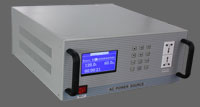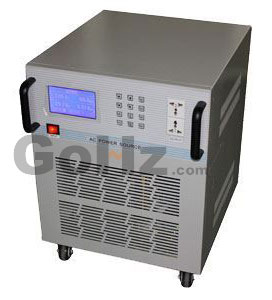Category

Frequency Converters Save Money for Your Motors
Frequency converter changes AC to DC and then from the DC creates an output voltage at an adjustable frequency to run the load motor at whatever speed you want from 0 to 60 Hz. The voltage generally varies from 0 to full voltage as the speed goes from 0 to 60 Hz. They can also go above 60 Hz up to 400 Hz, but the torque falls off as the speed increases.
Frequency converter can be a great way to save money for your motor-related business. If your plants have a lot of induction motors or uses older style motors, then a frequency converter could make your plants more efficient and save money for you.

Frequency converter saves energy because it can adjust the speed of an induction motor by controlling the AC power supply that is input into the induction motor. Motors are used in a large proportion of plants, from small tasks such as running fans, water pumps or compressors, to large industrial jobs.
Older style motors run at a fixed speed, which may or may not be suitable to the application that it is used for. A frequency converter can change the speed so that it is optimal for the task and runs more efficiently in result of money saving.
Frequency converter allows loads driven by AC electric motors (such as fans and pumps) to operate in a wide range of speed and torque settings compared to the motors fixed speed and torque setting. In many cases, motors are controlled by a means of valve that regulates flow or a damper that controls the airflow while the speed of the motor itself remains unchanged. These and other methods are inefficient from an energy point of view.
For example, systems with variable air volume or dampers can use a frequency converter to modulate the supply air fan speed in response to variable air volume control. When a zone doesn't need much cooling because it's unoccupied or the weather is cool, VAV controllers will restrict the air supply to the space, causing an increase in duct pressure. The frequency converter responds by reducing fan speed and so saving energy & money.
Frequency converters come in many different sizes and are typically encased in boxes that can be as small as a milk carton or as big as a wardrobe, depending on the size of the induction motor or motors they regulate.
Conclusion
Using frequency converters in speed control of flow devices, such as pumps, fans and compressors, is not a new innovation. However, new technologies in these devices have lowered their cost making them much more attractive to across wide variety of uses. There is great potential to save energy by using more variable frequency control for induction motors.
Frequency converter can be a great way to save money for your motor-related business. If your plants have a lot of induction motors or uses older style motors, then a frequency converter could make your plants more efficient and save money for you.

Frequency converter saves energy because it can adjust the speed of an induction motor by controlling the AC power supply that is input into the induction motor. Motors are used in a large proportion of plants, from small tasks such as running fans, water pumps or compressors, to large industrial jobs.
Older style motors run at a fixed speed, which may or may not be suitable to the application that it is used for. A frequency converter can change the speed so that it is optimal for the task and runs more efficiently in result of money saving.
Frequency converter allows loads driven by AC electric motors (such as fans and pumps) to operate in a wide range of speed and torque settings compared to the motors fixed speed and torque setting. In many cases, motors are controlled by a means of valve that regulates flow or a damper that controls the airflow while the speed of the motor itself remains unchanged. These and other methods are inefficient from an energy point of view.
For example, systems with variable air volume or dampers can use a frequency converter to modulate the supply air fan speed in response to variable air volume control. When a zone doesn't need much cooling because it's unoccupied or the weather is cool, VAV controllers will restrict the air supply to the space, causing an increase in duct pressure. The frequency converter responds by reducing fan speed and so saving energy & money.
Frequency converters come in many different sizes and are typically encased in boxes that can be as small as a milk carton or as big as a wardrobe, depending on the size of the induction motor or motors they regulate.
Conclusion
Using frequency converters in speed control of flow devices, such as pumps, fans and compressors, is not a new innovation. However, new technologies in these devices have lowered their cost making them much more attractive to across wide variety of uses. There is great potential to save energy by using more variable frequency control for induction motors.
Post a Comment:
You may also like:

